Climate change countermeasures
Solar power
Kokusai Kogyo develops and operates community-centric solar photovoltaic (PV) power stations, stemming from two main pillars of concrete expertise and experience – close to 70 years of urban development experience, and pioneering development of solar PV power stations – both in Japan and globally.
Development track record
As a partner to the local government-driven future of urban development, we develop and operate distributed energy including solar PV interlinked with local government master plans, as well as people- and nature-friendly regional and urban development – all with an aim of achieving safe, secure and sustainable green communities
List of achievements
Up to the present (March 2024)
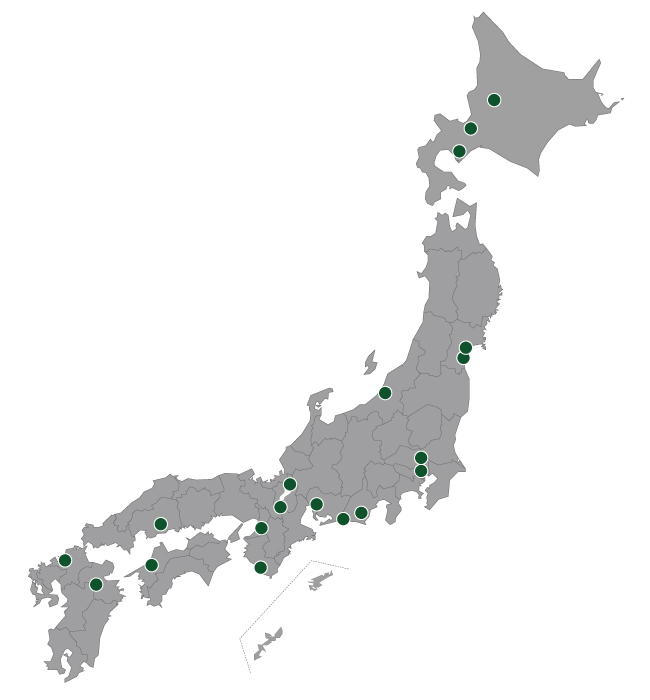
Contributing to the local community through solar PV power stations
Through our solar PV power stations we contribute to a better environment and to safe and secure community development, such as by supporting environmental education, energy independence utilizing local characteristics, and disaster risk reduction and preparedness measures.
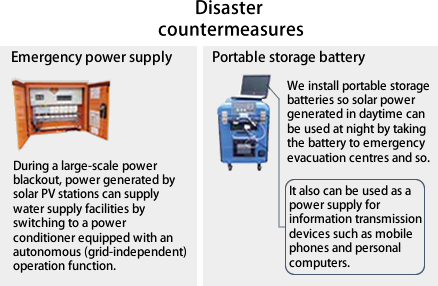

Our Domestic Photovoltaic Power Stations
Fukuoka-Kamata SolarWay

| Location | Fukuoka, Fukuoka |
|---|---|
| Maximum capacity | 1,198kW |
| Area | 17,569m2 |
| Start of construction | April 2019 |
| Start of operations | November 2019 |
| Equivalent household systems | 450 |
Iwanuma SolarWay
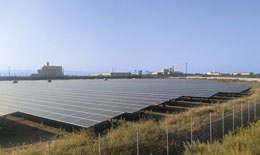
| Location | Iwanuma, Miyagi |
|---|---|
| Maximum capacity | 2,508kW |
| Area | 28,000m2 |
| Start of construction | May 2019 |
| Start of operations | November 2019 |
| Equivalent household systems | 700 |
Nanki-Shirahama SolarWay
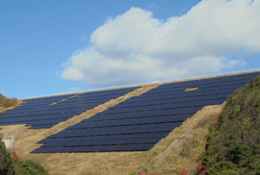
| Location | Shirahama, Wakayama |
|---|---|
| Maximum capacity | 2,500kW |
| Area | 34,408m2 |
| Start of construction | April 2018 |
| Start of operations | February 2019 |
| Equivalent household systems | 729 |
Kasukabe SolarWay
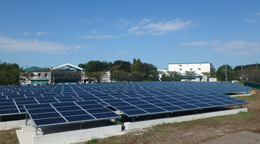
| Location | Kasukabe, Saitama |
|---|---|
| Maximum capacity | 1,267kW |
| Area | 15,166m2 |
| Start of construction | July 2018 |
| Start of operations | October 2018 |
| Equivalent household systems | 288 |
Kosai SolarWay
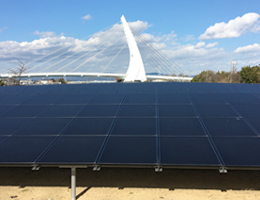
| Location | Kosai, Shizuoka |
|---|---|
| Maximum capacity | 1,501kW |
| Area | 20,502m2 |
| Start of construction | May 2016 |
| Start of operations | February 2017 |
- Facility features
- Kosai SolarWay photovoltaic power station has a capacity of 1,501 kW, which is roughly equivalent to the power consumed by 318 households.
Higashiura SolarWay
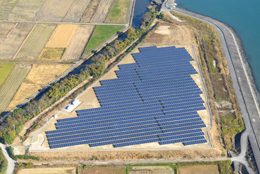
| Location | Higashiura, Aichi |
|---|---|
| Maximum capacity | 1,865kW |
| Area | 24,000m2 |
| Start of construction | February 2016 |
| Start of operations | December 2016 |
- Facility features
- Higashiura SolarWay photovoltaic power station has a capacity of 1,865 kW, which is roughly equivalent to the power consumed by 386 households.
Muroran SolarWay
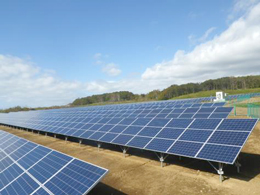
| Location | Muroran, Hokkaido |
|---|---|
| Maximum capacity | 1,462kW |
| Area | 40,000m2 |
| Start of construction | April 2016 |
| Start of operations | October 2016 |
- Facility features
- Muroran SolarWay photovoltaic power station has a capacity of 1,462 kW, which is roughly equivalent to the power consumed by 288 households.
Izumozaki SolarWay
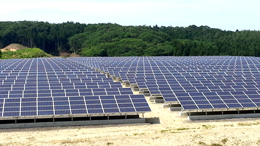
| Location | Izumozaki, Niigata (within Eco Park Izumozaki) |
|---|---|
| Maximum capacity | 2,101kW |
| Area | 30,973m2 |
| Start of construction | August 2015 |
| Start of operations | June 2016 |
- Facility features
- Izumozaki SolarWay photovoltaic power station utilizes land once used as a garbage disposal site. It has a capacity of 2,101 kW, which is roughly equivalent to the power consumed by 364 households.
Takikawa SolarWay
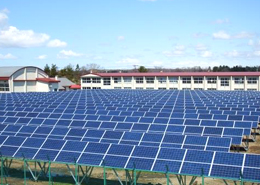
| Location | Takikawa, Hokkaido |
|---|---|
| Maximum capacity | 612kW |
| Area | 16,000m2 |
| Start of construction | November 2015 |
| Start of operations | May 2016 |
- Facility features
- Takikawa SolarWay photovoltaic power station is situated on the site of a former school. It has a capacity of 612 kW, which is roughly equivalent to the power consumed by 114 standard-size households.
Kohoku SolarWay
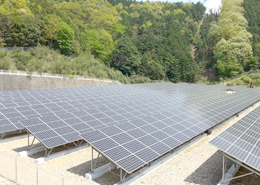
| Location | Nagahama, Shiga |
|---|---|
| Maximum capacity | 832kW |
| Area | 9,887m2 |
| Start of construction | November 2015 |
| Start of operations | April 2016 |
- Facility features
- The photovoltaic power station, Kohoku SolarWay is run by the Kohoku administration center at a former waste disposal site. It has a capacity of 832 kW, which is roughly equivalent to the power consumed by 153 households.
Sapporo SolarWay

| Location | Sapporo, Hokkaido |
|---|---|
| Maximum capacity | 950kW |
| Area | 24,000m2 |
| Start of construction | September 2015 |
| Start of operations | March 2016 |
- Facility features
- Sapporo SolarWay photovoltaic power station utilizes land once used as a garbage disposal site. It has a capacity of 950 kW, which is roughly equivalent to the power consumed by 176 households.
Otsu SolarWay
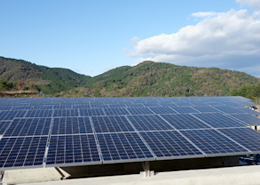
| Location | Otsu, Shiga |
|---|---|
| Maximum capacity | 948kW |
| Area | 16,241m2 |
| Start of construction | July 2015 |
| Start of operations | January 2016 |
- Facility features
- Otsu SolarWay photovoltaic power station is run by the Otsu Clean Center on part of a former waste disposal site. It has a capacity of roughly 948 kW, which is roughly equivalent to the power consumed by 175 households.
Onomichi SolarWay
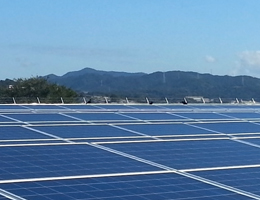
| Location | Onomichi, Hiroshima |
|---|---|
| Maximum capacity | 732kW |
| Area | 8,163m2 |
| Start of construction | March 2015 |
| Start of operations | September 2015 |
- Facility features
- Onomichi SolarWay photovoltaic power station utilizes land once used as a water purification plant. It has a capacity of 732 kW, which is roughly equivalent to the power consumed by 151 households.
Taketa-Kashiwabaru SolarWay
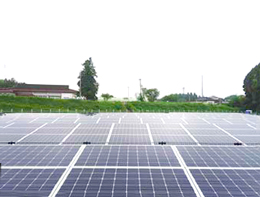
| Location | Taketa, Oita |
|---|---|
| Maximum capacity | 612kW |
| Area | 11,471m2 |
| Start of construction | January 2015 |
| Start of operations | July 2015 |
- Facility features
- The photovoltaic power station, Taketa-Kashiwabaru SolarWay was constructed on Taketa City’s Kashiwabaru Ground (former site of a Kashiwabaru elementary school). The annual energy consumption is roughly equivalent to the annual consumption of 200 households and the amount of CO2 reduction is approximately 246 tons (annual amount of CO2 absorption is roughly equivalent to 17,400 cedar trees).
Itabashi Rooftop SolarWay
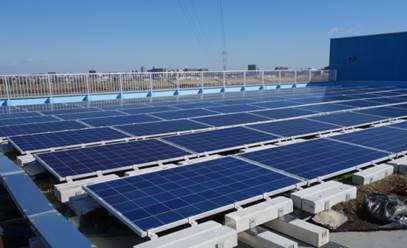
| Location | Itabashi, Tokyo |
|---|---|
| Maximum capacity | 36kW |
| Area | 501.48m2 |
| Start of construction | January 2015 |
| Start of operations | March 2015 |
- Facility features
- The Itabashi Rooftop SolarWay was our first rooftop project. We implemented the project in collaboration with an environmentally advanced city representing the 23 wards of Tokyo.
The plant generates approximately the equivalent annual energy consumption of 10 households and the amount of CO2 reduction is approximately 19 tons (annual amount of carbon dioxide absorption is roughly equivalent to 1,400 cedar trees).
Shimada Rooftop SolarWay
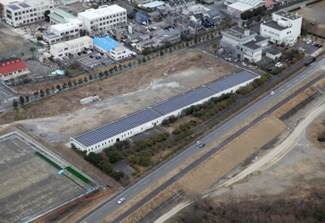
| Location | Shimada, Shizuoka |
|---|---|
| Maximum capacity | 199kW |
| Area | 約2,000m2 |
| Start of construction | October 2014 |
| Start of operations | February 2015 |
- Facility features
- This project was built on the flat roof (single story, steel-reinforced concrete) of the Shimada City water purification (treatment) plant. The plant generates approximately the equivalent annual energy consumption of 50 households and the amount of CO2 reduction is approximately 117 tons (annual amount of CO2 absorption is roughly equivalent to 8,200 cedar trees).
Wakayama-Hashimoto SolarWay
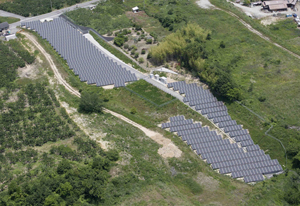
| Location | Hashimoto, Wakayama |
|---|---|
| Maximum capacity | 708kW |
| Area | 12,500m2 |
| Start of construction | January 2014 |
| Start of operations | April 2014 |
- Facility features
- This power station is operating on a former dioxin treatment facility. This project combines an element of “public-private industry cohesion” and is a symbol of the future development of the local community. This solar photovoltaic project contributes to Wakayama Prefecture’s policy on disaster risk reduction and prevention in various ways, including:
- ① Supporting environmental education (installation of study and tour related facilities, holding of study tours),
- ② Supplying emergency power, and
- ③ Proposing local development and disaster risk reduction and prevention initiatives.

